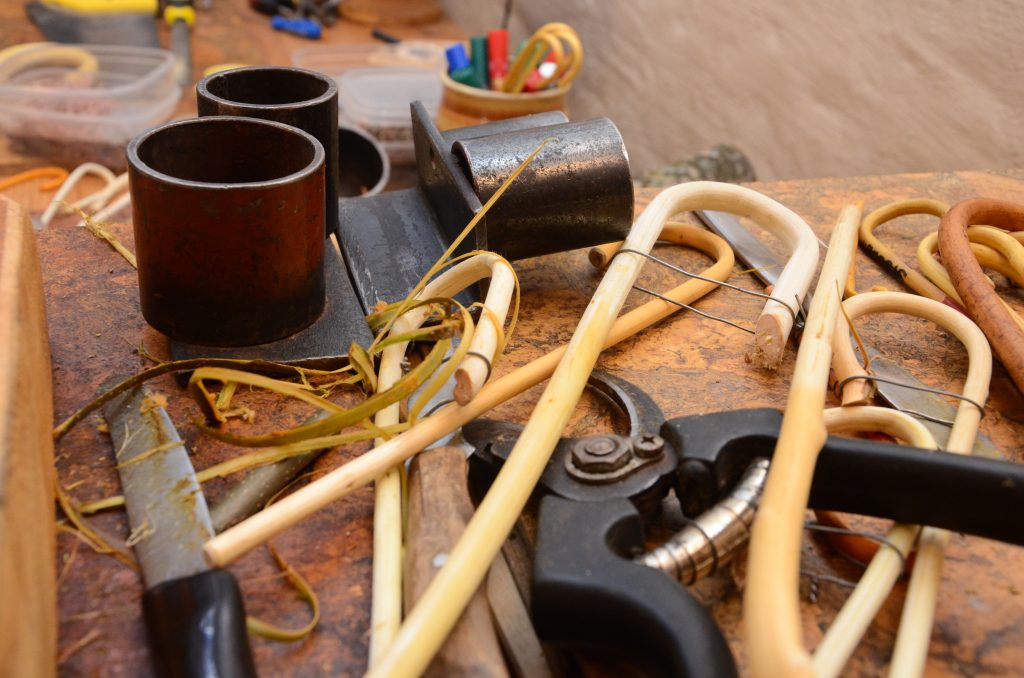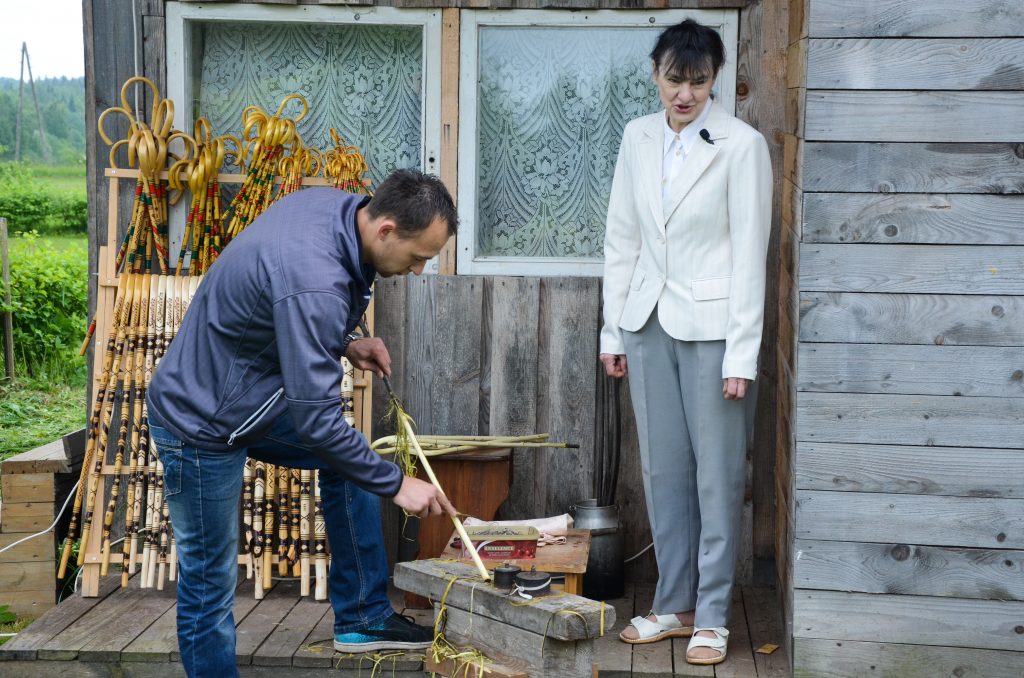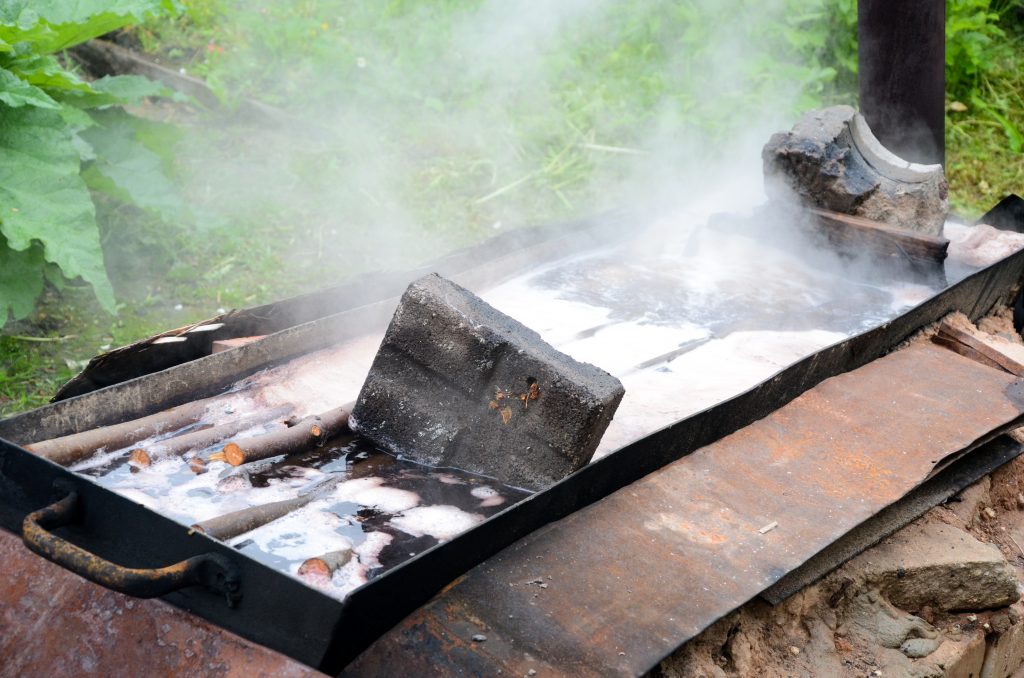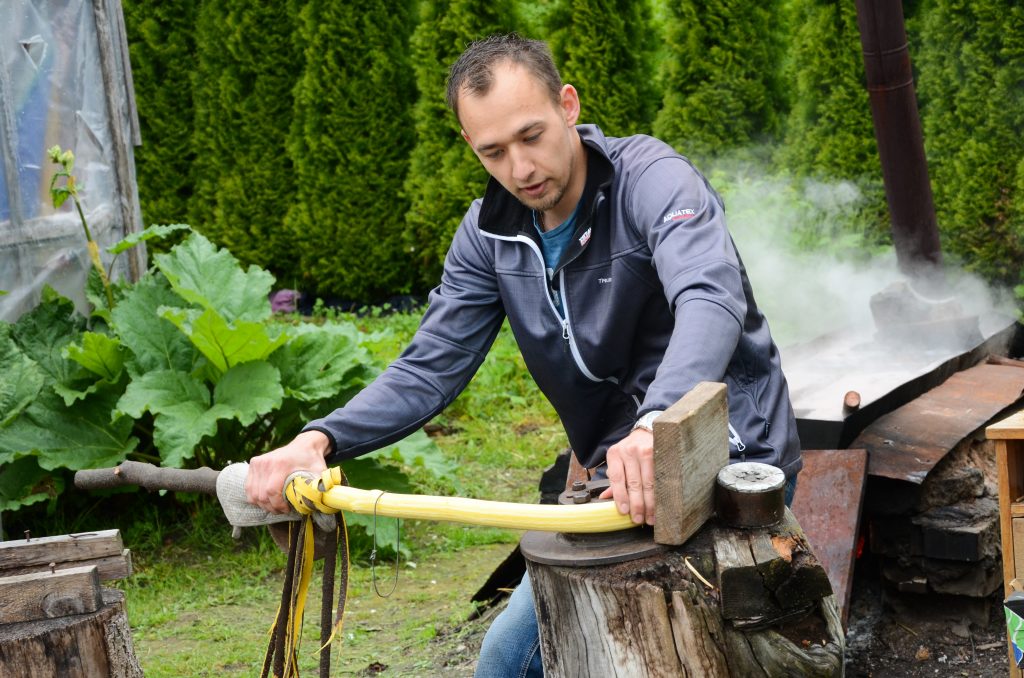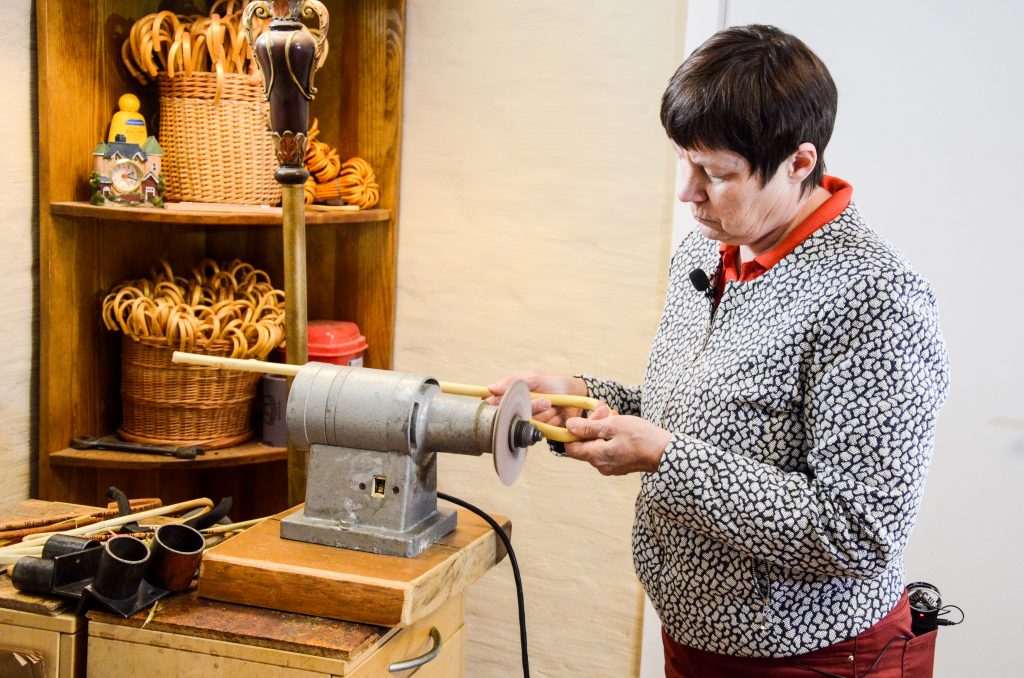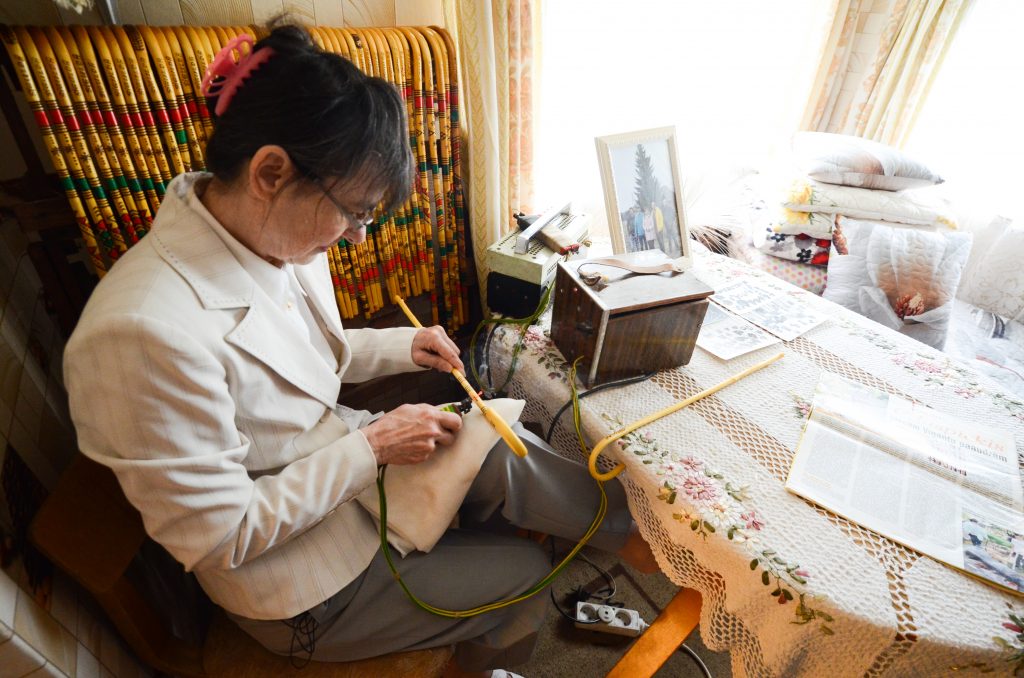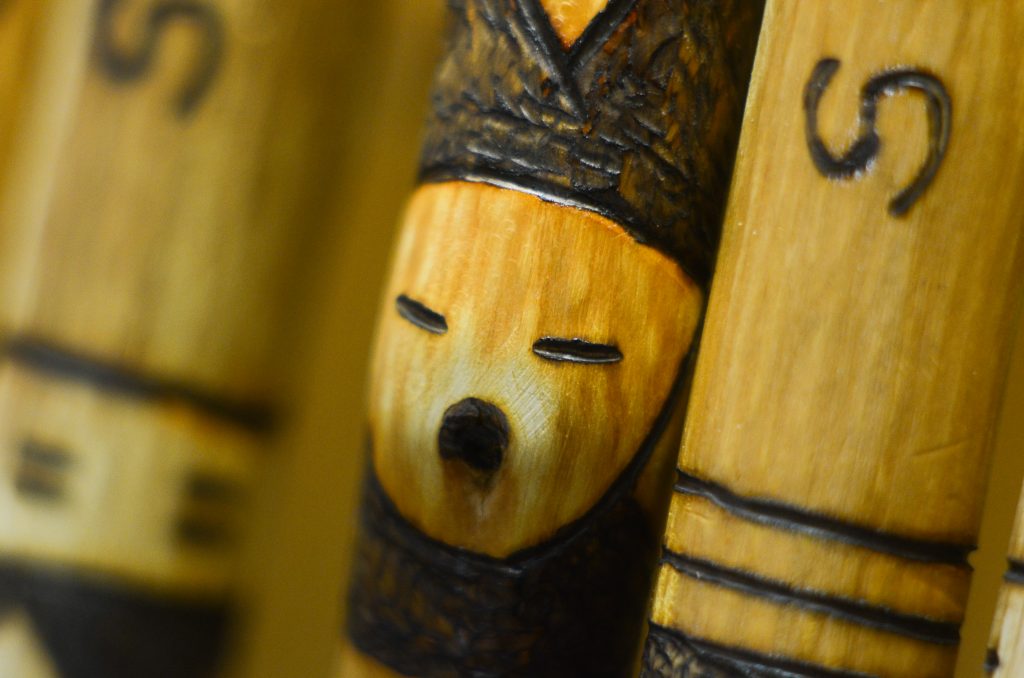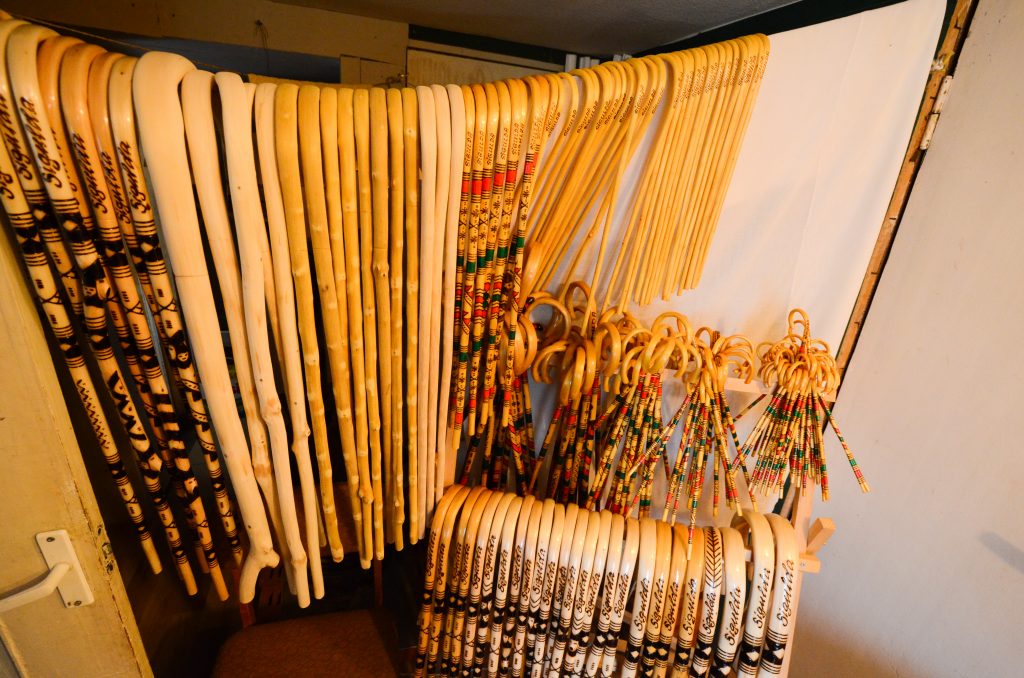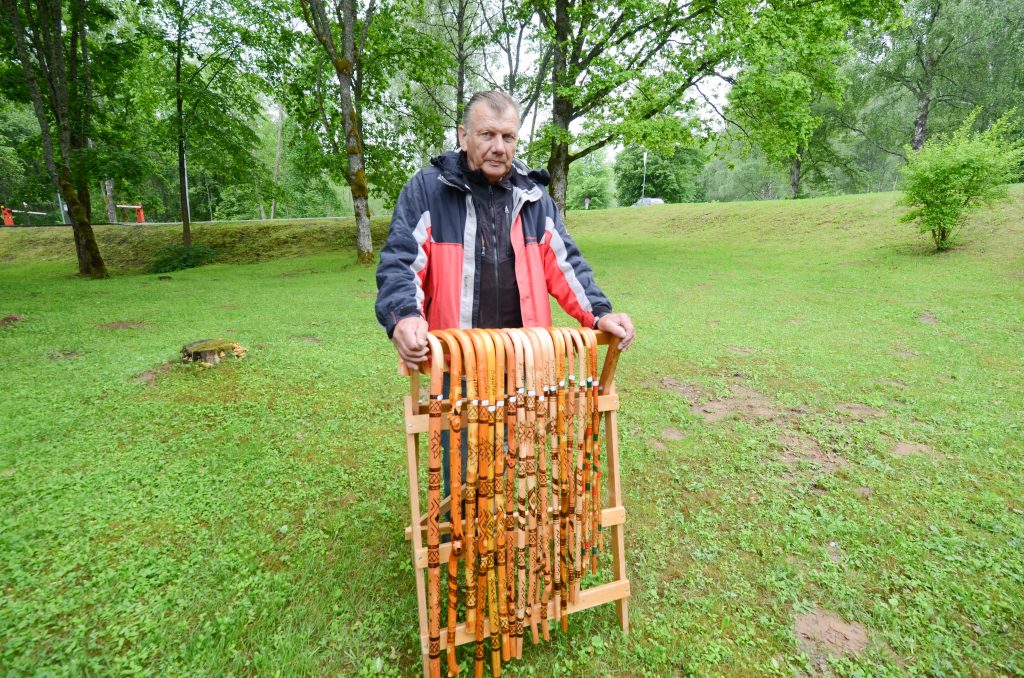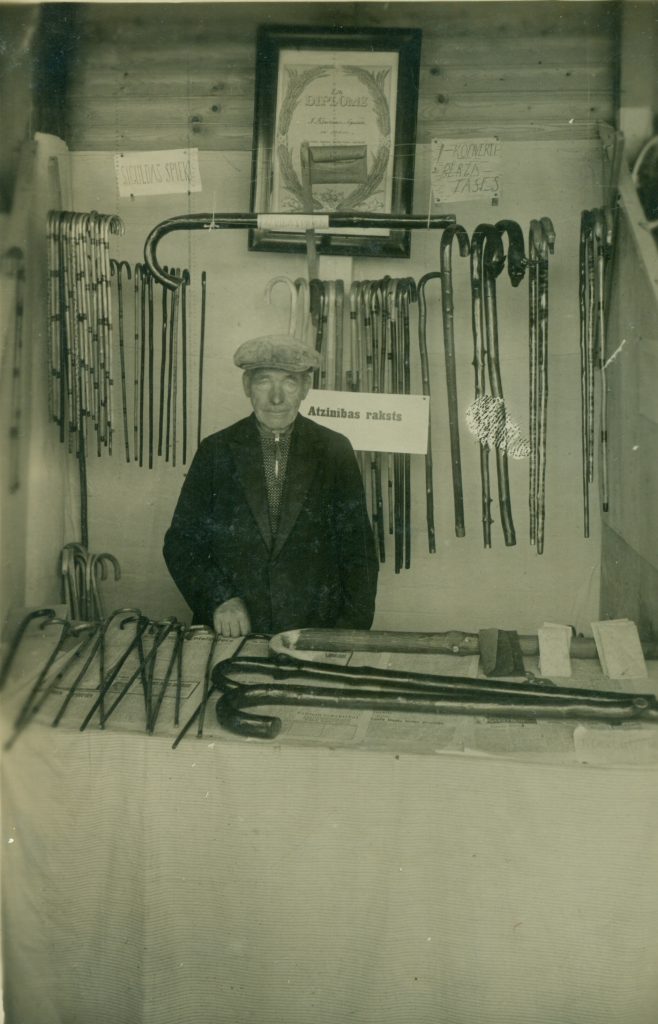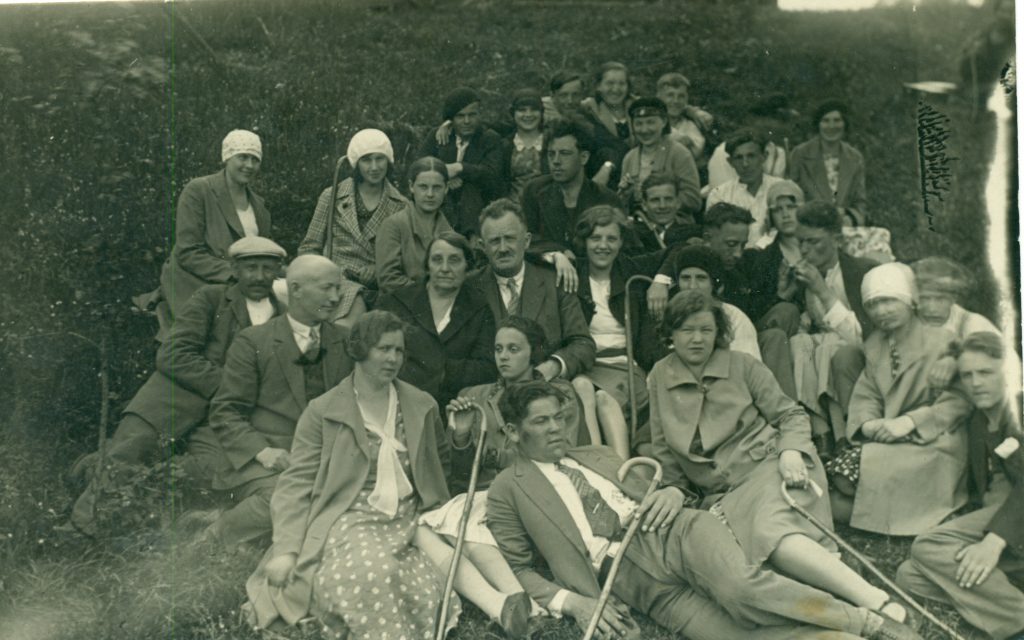Author:
Ieva Vītola
Traditional craft skills
Knowledge and practices concerning nature and the universe
Title
Sigulda walking stick craftsmanship (2017)
Sigulda “spieķi”, “štoki”, “spieķīši”
Geography
Sigulda (Sigulda municipality, Sigulda) and Turaida (Krimulda municipality, Krimulda parish).
In the more narrow sense, Sigulda walking sticks and making them is connected to walking stick makers who have acquired their skills either through inheritance or learning. At present, a total of 11 local residents who are able to prepare Sigulda walking sticks are known in Sigulda and Krimulda.
In the broader sense, Sigulda walking sticks and
the skills of making them are connected to nearly every citizen of Sigulda municipality. Sigulda has for a long time been a favourite sight-seeing object and the destination of many travellers.
Over time, the cane has become a very characteristic symbol of Sigulda. Although the the souvenir created by local craftsmen is mostly for Sigulda guests, however, today, the Sigulda walking stick is one of the elements of the local community identity – it forms the form of belonging and pride of one's place of residence.
Significance in community life
Sigulda's walking stick is the oldest and most characteristic souvenir of Sigulda – the work of local craftsmen.
There are at least 150 years of walking stick crafting history in the area of Sigulda, since the time when the Gauja valley and its Sigulda and Turaida banks became a favorite tourist object. Originally, the travellers purchased the walking sticks to make it easier to travel the trails on the steep inclines of Gauja banks.
Over time, the Sigulda walking stick has become a significant symbol of the area, which is purchased by both Latvian and foreign tourists as a souvenir from Sigulda and Turaida. In Sigulda, a well-known phrase – if you have no walking stick, you haven't been in Sigulda!
The walking stick is also a favorite gift for friends and guests in Latvia and abroad.
Activities
The Sigulda walking stick is prepared from the deciduous tree species that can be used well for bending – mainly buckthorn, osier, bird-cherry trees, also hazels, willows, maples, brambles. Each tree has its own characteristics, for example, from bird cherries one can make resistant, light or so-called white cane, small souvenirs are made only from buckthorn that are flexible and yellowish.
Each cane in the making process is handled at least 20 times in the hands of the master – it is cut, steamed, peeled, curved, massaged or clamped, polished, decorated, painted, lacquered until its unique appearance is obtained.
Today, craftsmen offer at least eight different types of walking sticks, ranging from very tiny souvenir walking sticks to large-sized sticks used for practical purposes – physical support, faster and safer movement.
Beliefs, rituals, and unwritten rules
Each Sigulda walking stick is different – none of the many thousands made by Sigulda craftsmen for the tourist season are the same as any other.
The appearance of Sigulda's walking sticks consists of rich burnt-in ornaments, both the word “Sigulda” on the head of the cane, and the various ornaments (rounds, dots, stripes, rectangles, curves, herringbones, suns, etc.), as well as the so-called “devil heads” in the branching areas, also known as the little devils, animals, bears, dogs, house spirits, faces - whatever each master is calling them.
In the past 50-60 years Sigulda's walking sticks have become colourful, with the masters now using green and red color.
Mostly self-made instruments are used in the making of the walking sticks: the rolls or the folding bench for the bending of the stick, special electrical equipment for the burning of patterns etc.
The masters are also characterised by the use of craft-specific terms, such as “stilbiņš” (“thigh”), “galviņa” (“head”), “iztušēt” (buff out), “izmasēt” (massage), “izspaidelēt” (press out) etc.
When preparing the walking sticks, the master must be able to assess and use the properties of the wood, including the cycles of nature and the phases of the moon; a good eye is also required to form a reasonable spacing of the bend of the stick relative to the length and thickness of the stem of the walking stick; the hand nimbleness and skills necessary for the bending of the sticks also matter a lot, equally in the bending, adorning, and painting of the walking sticks. Each Sigulda walking sticks craftsman has his own handwriting – it is composed of both the knowledge inherited and acquired in practice and the creativity of each master.
Passing on and transferring skills
In the preservation of the Sigulda walking sticks, the important aspect is the craft skills, not the shape or the walking stick function that has changed over time, largely adapting to the demand.
Regardless of whether the big or small souvenir walking stick is being made, the walking stick master must have the same knowledge.
When creating walking-stick-shaped souvenirs – magnets, key rings, walking stick tree species are used, the process also involves burning, painting, it is all related and based on craftsmen's skills, it is therefore considered to belong with the walking stick making tradition.
If the visibility of the walking stick, the uniqueness of the craft, and the history of the local tradition are promoted, then more walking sticks and craftsmen will be needed.
In the preservation of crafts, the demand is important, and Sigulda will continue to provide it with its resort-type appeal.
History
A total of four stages of evolution were observed in the Sigulda walking sticks: they reveal that the walking stick has become a significant and diverse Sigulda Souvenir from practical necessity.
The beginning of the Sigulda walking stick is to be found in the middle of the 19th century: travel guides of that time report an opportunity to purchase walking sticks that will be useful for walking through the glens of Sigulda.
Sigulda, Turaida and Krimulda became a favorite recreational and resort site in the second half of the 19th century, when, thanks to the owners of Krimulda and Sigulda Manor (The Līvens, Counts von der Borhs, knyazes Cropotkins), based on the European resports, so-called Alpine trails with bridges, plank-ways ,steps, and viewing spots were installed in the ancient Valley of Gauja.
Originally, Sigulda's walking sticks were made from the hazel, they were not decorated, and only the head of the walking stick was de-barked.
In the 20s–30s of the 20th century, when the homeland tourism was particularly popularised, the appearance of Sigulda's walking sticks changed. The local masters began to adorn them with different patterns by cutting or burning signs and ornaments into the sticks.
The present appearance of the sticks came after the Second World War, when Sigulda became a very popular resort among Soviet Union tourists.
Due to the operation of the Gauja National Park and the improvement of trails, the large walking sticks lost their demand and were out-competed by a variety of souvenir walking sticks.
The walking stick masters began to make their products brighter with green and red ink, thus responding to the taste and demand of Soviet tourists. During this time, the canes began to be lacquered.
Today the walking stick as a Sigulda municipality symbol is also used in other souvenirs – wooden magnets, umbrella handles, keychains, various printing works, design and marketing activities. The Sigulda walking stick was also given a honorary place in the Sigulda landscape – in 2007, by celebrating Sigulda's 800th anniversary, the Walking Stick Park was created in the urban environment.
Additional Information
When making the walking sticks (to be fair, not by all masters), the knowledge of nature is taken into account: not only the characteristics of the tree species must be known, but it is also desirable to observe the nature cycle: materials for the preparation of walking sticks are harvested in autumn or winter when the trees have less juice, otherwise the cane may lose quality.
In addition, moon phases are also important – the materials for the canes are better obtained in the old month, and the sticks are curved in a new month.
Masters
At present, a total of 11 local residents are known in Sigulda and Krimulda who make the walking sticks.
Six of them are practising craftsmen and masters of the Sigulda walking sticks:
• Antra Plavgo (b. 1958);
• Eduards Poškus (b. 1938);
• Anita Pulle (b. 1951);
• Rolands Glāznieks (b. 1987);
• Uldis Glāznieks (b. 1985);
• Andris Celms (b. 1946).
Four or more former craftsmen also still have retained the skills of walking stick making – representatives of the Vīgants family: Edgars Vīgants (b. 1954), Vizma Logina, Mārtiņš Pulle, Sandris Komarovs, as well as one Siguldian, who has learned the skills from her father and her husband, and still prepares small walking sticks, but she wished to remain anonymous.
Agencies and institutions
Tied to Sigulda's walking sticks and their craft skills of making them are the related walking stick masters who have acquired their skills either through inheritance or learning. At present, a total of 11 local residents who are able to prepare Sigulda walking sticks are known in Sigulda and Krimulda. In the Sigulda Castle quarter, a “Spieķu darbnīca” (“walking stick workshop”) operates.
The Sigulda walking stick is one of the elements of the local community identity: it creates a sense of belonging and pride of one's place of residence and is actively used in the visual information of the municipality in communication.
Sigulda's walking stick masters collaborate with several institutions in Sigulda municipality:
• Sigulda Municipality Council;
• Protected Cultural Monument – Turaida Museum Reserve;
• Sigulda Municipality Library;
• Friends of Krimulda Municipality History Society;
• Sigulda and Krimulda District businesses – souvenir sellers.
Consolidation
• The mastery of the walking stick making is a craft that has been passed and inherited from generation to generation; whole families used to practice the craft. Now it's fewer and fewer. The development of the “Sigulda Walking Stick making” education programme for Sigulda municipality educational institutions was realized in a limited scope, because a part of the masters transfer skills from generation to generation, maintaining it as a commercial practice. In contrast, the walking stick maker Antra Plavgo has set up a cane workshop in the Sigulda Castle Quarter and provides an opportunity to learn the practice both individually and in groups. During the summer student employment programme, 2 students have learned the skill of walking stick making;
• In support of existing walking stick makers, it the opportunity was provided to sell walking sticks at all sales points of souvenirs in the municipality. There was marketing support for master classes in the Castle Quarter with Antra Plavgo. The master also receives tax discounts;
• In cooperation with the Investment and Development Agency of Latvia, the walking stick making class is included in the visits of Latvian tourism agencies. The walking stick master class is a part of the tourism offering of the Sigulda Castle. Several Latvian schools have included the walking stick making master class in their “Latvian School Bag” programme. The guide school graduates were given a pin with a walking stick symbol;
• In order to maintain the skills of the craft, the walking stick workshops are included in the LNCC event “Meet your Master”;
• In 2020, the route “angel trail” was created in the form of a cane and closed in the palace block “sticks”;
• The municipality of Sigulda took part in the interregional cooperation programme URBACT III, implementing the PROJECT INT-HERIT or “a network of implementation of small and medium-sized European urban cultural heritage strategies”. The aim of the project is to introduce innovative solutions for the management of cultural heritage in small and medium-sized European cities, focusing on integrated approaches to the implementation of strategies and ensuring high-quality growth in social and economic development.
In 2018, the cultural management model Sigulda municipality changed and the replacement of specialists also affected the implementation of the element conservation plan.
There is a growing use of the walking stick symbol in visual communication and events. A video material on the skill of walking stick making has been created, which involves the master Antra Plavgo and is available in https://youtu.be/EJ4JVUkxtYo. The walking stick workshop is included in the tour offering of Sigulda, and it is also popular with schools for both field trips and implementing the programme “Latvian School Bag”.
The crafts of Sigulda's walking stick makers have been purchased to be used as gifts for municipality representation, including the International People's Dance Festival “Sudmaliņas”; and as prizes in various competitions with the total value of 2753 euros, in creative workshops in guest visits – 450 euros, for sale at tourist information points – 11407 euro, within the framework of the programme “Latvian School Bag” in Sigulda Schools – 280 euros and the project INT-HERIT or “implementation network of small and medium-sized European urban cultural heritage strategies” – 563 euros.
Continuation/development
In order to promote the preservation of Sigulda's walking stick craft– a demand for craft skills, the promotion of a cultural historical heritage element in a wider society – both in the public outdoor, electronic environment, printed form, tourism exhibitions and events and in the activities of Sigulda municipality and cultural educational processes – is planned with various marketing activities:
• After administrative territorial reform, the Sigulda Municipality Culture Centre has introduced the role of a cultural environment specialist and their duties include research activities in the field of cultural environmental heritage;
• The municipality of Sigulda plans to issue a guide in printed form on the history of the walking stick;
• Development of walking sticks as a creative industry in collaboration with the Latvian Academy of Art;
• Support for the activities of existing and new walking stick makers, including local craft skills as a priority in the contest of the cultural projects of the municipality of Sigulda;
• The regular inclusion of the walking sticks in the programme “Meet your Master”;
• Promotion of Sigulda walking stick craftmanship in the public outdoor environment, electronic environment;
• Promotion of Sigulda's walking stick craftmanship in events, both as an element in the scenography and as prizes or gifts for guests.
The objective is to ensure the sustainability of intangible cultural heritage, including the development, promotion, value enhancement, animation, practice and transfer of intangible cultural heritage elements, including through non-formal learning.
Threats
• The Sigulda walking stick craftmanship is closely related to the tourism sector – due to the decreasing number of tourists and the lowering demand for commemoration objects, there is a threat to the operation of walking stick makers and the existence and inheritance of walking stick making skills;
• The walking stick craft is also threatened by the business factor – if it is possible to make the sticks industrially and cheaply, the skills of the craft and the hand work will become uncompetitive. An inadequacy of the work and price ratio has already been observed;
• The craft Sigulda walking sticks in the future is also threatened by the lack of masters – today, when the profitability of the work and time invested is assessed, manual work is not considered to be a significant source of income and employment by the younger generation;
• The preparation of the sticks is harmful to the health of the masters, the dust arising from the grinding, the smoke from the burning of the ornaments, the smell from the varnish causes a variety of diseases which, as the practice suggests, may lead to a decision to stop the activity in that trade.
Applicant
Sigulda municipality council, reg. No 90000048152, Pils iela 16, Sigulda, LV-2150
Image Gallery
Video
Text Materials
Publications
Siguldas novadmācība (2002). Spieķu meistari. Sigulda: Siguldas Valsts ģimnāzija. - p. 156. - 158.
Turaida Museum Reserve (2007). Sigulda's walking sticks. (booklet)
Lūse L. (2007). Siguldas spieķa stāsts. Komersanta Vēstnesis. No.32 (88). 8.08.2007.

